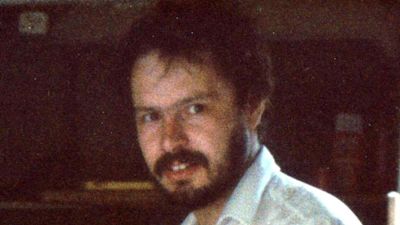Daniel Morgan report: What happened to the murder victim and what is the new report into his death?

More than three decades on from his murder outside a south London pub, Daniel Morgan's family have been waiting a long time for any form of justice.
But on Tuesday, they finally got to read the long-awaited independent report into Mr Morgan's death, which accused the Metropolitan Police of “a form of institutional corruption” over the unsolved murder of private investigator Mr Morgan.
After the report was published the Met said they "deeply regret" their failure to bring Mr Morgan's killer to justice and accepted "corruption and the malicious acts of corrupt individuals were a major factor in the failure of the first investigation."
Here's what happened to Mr Morgan and why the report could be so important.
Who was Daniel Morgan?
Mr Morgan, 37, was a private investigator living in south London. He married wife Iris in his late 20s and they had two children, Sarah and Daniel.
At the time of his murder, Mr Morgan worked for Southern Investigations, a company he had set up with partner Jonathan Rees.
What happened?
On March 10, 1987, Mr Morgan was found dead in the car park of the Golden Lion pub in Sydenham, having been struck four or five times to the head with an axe.
He had earlier been having a drink in the pub with his business partner Mr Rees.
Although a watch had been stolen, his wallet had been left and £1,000 was still in his jacket pocket. Notes he had been seen writing earlier were also stolen from his pocket.
The investigations
Met police officer Sid Fillery was assigned to the case initially, with the Met unaware that Mr Fillery had worked for Mr Morgan's private investigation company.
A month after Mr Morgan's murder, six people were arrested, including business partner Mr Rees, but all were eventually released without charge.
At the inquest into Mr Morgan's murder in 1988, it was alleged that Mr Rees told the company's accountant that friends in the police would murder Mr Morgan so that Mr Fillery could become a partner. Mr Rees denied these claims.
Mr Fillery did indeed become partner, after retiring from the police on medical grounds. He faced accusations of evidence and witness tampering at the inquest, which he denied.Between 1988 and 2006, five police investigations took place, amounting to a cost of £30 million.
Detective Chief Superintendent David Cook oversaw the fifth and final investigation in 2003.
In 2008, the investigation led to the arrest of Mr Rees, his brother-in-law Glenn Vian and his brother Garry Vian, and builder James Cook, on suspicion of murder.
Mr Fillery was also arrested on suspicion of attempting to pervert the course of justice, but in 2011 the trial fell apart due to a lack of evidence.
Then-home secretary Theresa May announced a new independent inquiry in 2013, the findings of which will be revealed on Tuesday.
All men launched a £4 million lawsuit against the Met Police for malicious arrest, they eventually won damages of more than £400,000 in 2019.
What is the significance of the report released today?
Mr Morgan's brother, Alastair Morgan, has campaigned for decades for justice for his brother.
He described recent delays to the report's publication as a "kick in the teeth" and said he expected the report to contain “a sizeable chapter on corruption”.
And after five failed inquiries, Mr Morgan's family has been hoping for a long-overdue explanation.
The report was expected to outline the potentially corrupt relationships between the private detective industry, the Metropolitan police and the media from the 1980s onwards, who bought and sold information. The unsolved murder investigation has another bizarre twist, after the defunct News of the World newspaper became embroiled in the case.
Journalists from the paper were caught carrying out a surveillance operation against the lead investigator DCS Cook and his family, after he launched a fresh appeal to find Mr Morgan's killers on the BBC's Crimewatch programme. The report was also expected to note this.
The panel examining the case had been due to publish its findings last month, before being told by the Home Office that no Parliamentary time could be found to allow this to happen.
It had been advised that the period of mourning after the Duke of Edinburgh’s death and the elections had caused a backlog of matters to be placed before Parliament.
Then the Home Office announced that it wanted to review the document, expected to contain a section on police corruption, and would keep parts of it secret if it felt necessary.
The Daniel Morgan Independent Panel said it had been told a publication date would not be agreed until the Home Office reviewed the report to ensure it complied with human rights and did not compromise national security.
The panel said that the Home Office had not mentioned there was a need to review the report and that it had worked with its counsel to ensure it complied with the relevant legal obligations including the Human Rights Act.
When the report was eventually released Commissioner Dame Cressida Dick apologised for the failure and said: “I would like to acknowledge, both personally and on behalf of the Met, the extraordinary resilience and determination of Daniel Morgan’s family in their pursuit of the truth and for the conviction of those responsible for his murder.
“It is a matter of great regret that no one has been brought to justice and that our mistakes have compounded the pain suffered by Daniel’s family. For that I apologise again now."